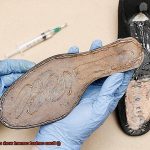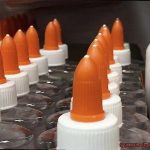Have you ever found yourself in a sticky situation, wondering if E6000 glue can handle the stretchy challenge of spandex? Well, get ready to dive into the adhesive wonderland with me as we unravel the truth.
In this blog post, we’ll be exploring the unique properties of E6000 glue and putting it to the ultimate test on our beloved spandex garments. We’ll uncover the dos and don’ts, navigate any potential roadblocks, and unveil whether E6000 is truly the superhero for spandex or if it’s time to consider other options.
Let’s crack open this case wide and discover if E6000 has what it takes to conquer spandex.
What is E6000?
Contents
- 1 What is E6000?
- 2 What is Spandex?
- 3 Compatibility of E6000 and Spandex
- 4 Advantages of Using E6000 on Spandex
- 5 Preparation Before Applying E6000 to Spandex
- 6 Application Tips for Using E6000 on Spandex
- 7 Curing Time for E6000 on Spandex
- 8 Reinforcing the Bond with Additional Stitching or Fabric-Specific Adhesive
- 9 Conclusion
When it comes to adhesive solutions, few can match the versatility and strength of E6000. Whether you’re a DIY enthusiast, a fashion designer, or simply someone looking to repair their favorite spandex garment, E6000 is the adhesive you can trust. In this blog post, we will explore the remarkable properties of E6000, its multitude of uses, benefits, and precautions when working with spandex.
The Remarkable Properties of E6000:
E6000 is an industrial-strength adhesive that delivers a permanent bond with unmatched tenacity. Its unique formulation enables it to adhere to various surfaces, such as fabric, metal, wood, glass, and ceramics. However, what truly sets E6000 apart is its flexibility even after drying, making it the ultimate choice for materials like spandex that demand both strength and pliability.
A Multitude of Uses and Benefits:

E6000 finds widespread application in the fashion industry for attaching embellishments like beads, rhinestones, sequins, and patches to garments. Additionally, it serves as a reliable adhesive for hemming or repairing clothing items. The exceptional adhesion provided by E6000 ensures that the bond remains intact even when subjected to frequent stretching and pulling. This is particularly crucial when working with spandex garments that require both flexibility and durability.
Moreover, once cured, E6000 becomes waterproof. This means that spandex garments bonded with E6000 can confidently withstand exposure to moisture from activities like sports or swimming without compromising their adhesive properties. This makes it an excellent choice for creating swimwear or sportswear that lasts.
Precautions and Considerations:
While E6000 is highly versatile, caution must be exercised when using it on spandex or any other fabric. It is advisable to perform a patch test on a small, inconspicuous area of the fabric before applying it to the entire garment. This helps ensure compatibility and prevents potential discoloration or damage.
Furthermore, while E6000 provides a strong bond, it may not be permanent in high-stress areas of spandex garments that undergo frequent stretching and movement. In such cases, additional reinforcement through stitching or a fabric-specific adhesive may be necessary to ensure the longevity of the bond.
What is Spandex?
In this blog post, we will take a deep dive into the wonders of this synthetic fiber known for its exceptional stretchability. From its composition to its uses and care tips, we will explore all there is to know about this superhero of the textile industry.
The Superpower of Stretch:
Spandex, also known as elastane or Lycra, is a synthetic fiber made from a polymer called polyurethane. Derived from petrochemicals, this unique material possesses an incredible ability to stretch up to 500% without losing its original shape. Imagine the freedom of movement and unparalleled comfort it provides in form-fitting clothing such as leggings, swimsuits, and athletic wear.
Dynamic Duo: Spandex Blends:
To enhance its durability and strength, spandex is often blended with other fibers like cotton, polyester, or nylon. These blends offer the best of both worlds by combining the stretchiness of spandex with the breathability or moisture-wicking properties of other materials. Whether it’s the softness of cotton or the quick-drying capabilities of polyester, spandex blends cater to various needs and preferences. The ratio of spandex in these blends can vary depending on the desired level of stretch and recovery.
The Making of a Superhero:
The production process of spandex involves extruding the polyurethane polymer into long filaments, which are then spun into yarns. These yarns are woven or knitted into fabric, resulting in a stretchy and resilient material that defies limitations. Treatments may be added during manufacturing to improve dyeability, softness, and resistance to chemicals or sunlight, ensuring that spandex meets the highest standards of performance.
Unbreakable Bonds:
One key advantage of spandex is its ability to retain its shape even after repeated stretching and washing. This remarkable property makes it a popular choice for activewear and garments that require a snug fit. Its excellent recovery properties allow it to quickly bounce back to its original shape after being stretched. Say goodbye to saggy knees in your leggings or loose-fitting swimwear.
Caring for Your Spandex:
To ensure the longevity of your spandex garments, proper care is essential. Avoid exposing spandex to excessive heat or chlorine, as they can degrade the fabric over time. Follow the garment’s care instructions and wash it in cold water to maintain its elasticity and vibrant colors. Remember, with great power comes great responsibility.

Compatibility of E6000 and Spandex
You’ve probably pondered the perfect adhesive to bond spandex. In this blog post, we will unravel the compatibility of E6000 adhesive and spandex, equipping you with knowledge and tips to achieve an unbreakable bond. So, grab your glue gun and let’s embark on this adhesive adventure.
Understanding the Challenge:
Spandex, renowned for its smoothness and stretchability, presents a unique challenge when it comes to adhesive compatibility. Its sleek surface makes it arduous for adhesives to adhere effectively. Moreover, constant stretching and movement exert strain on the bond, potentially weakening or breaking it over time.
The E6000 Solution:
E6000 adhesive is widely acclaimed for its versatility and robust bonding capabilities. While it may not be the most ideal choice for spandex, it can still be effective under specific circumstances. Let’s explore some techniques and precautions to enhance its compatibility with spandex.

Application Technique:
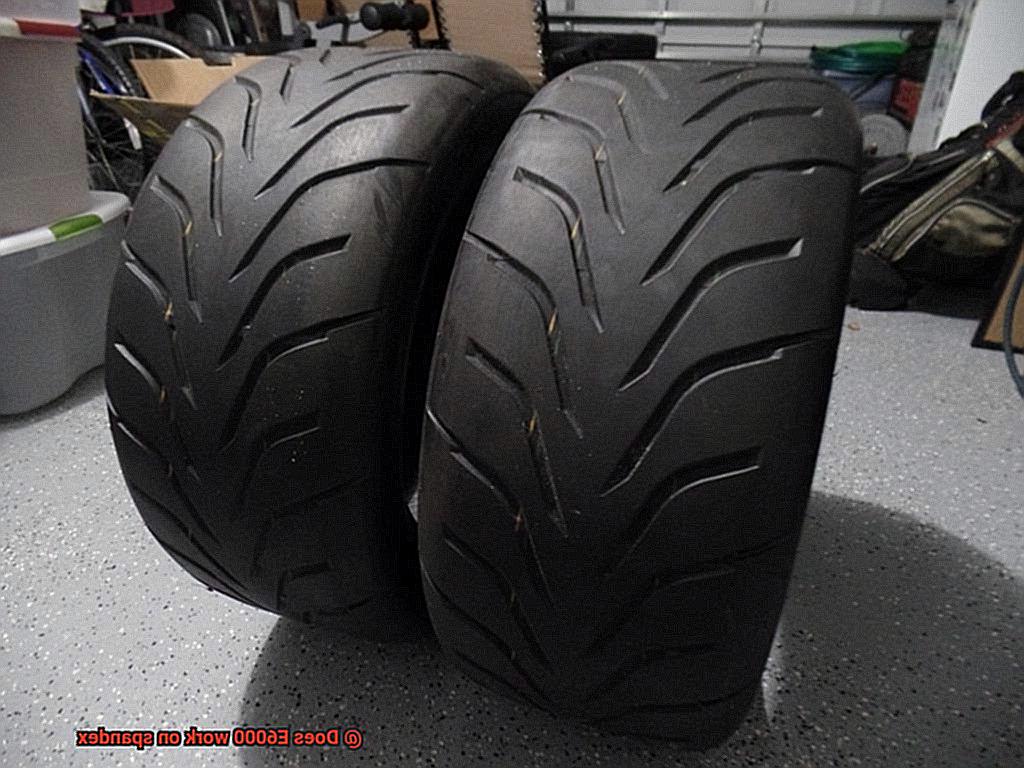
Apply the adhesive with restraint, ensuring an even distribution on the fabric without seepage. This minimizes potential staining or discoloration issues that may arise.
Drying Time:
Allow the adhesive to thoroughly dry before stretching or wearing the spandex garment. This grants ample time for the bond to strengthen and stabilize, enhancing its durability.
Reinforce with Sewing:
To provide additional support and safeguard against bond breakage due to excessive stretching, consider reinforcing the glued area by sewing or stitching around it. This fortifies the bond, upholding its integrity over time.
Specialized Alternatives:
While E6000 can work on spandex in certain cases, there are specialized adhesives available specifically designed for bonding stretchy fabrics. Fabric glue or fabric adhesive tapes, for instance, are formulated to be flexible and durable, rendering them ideal for spandex. These alternatives offer a seamless and invisible bond without the risk of staining or discoloration.
Final Thoughts:
When it comes to bonding spandex, selecting an adhesive that can withstand its unique properties is paramount. While E6000 can be effective in specific situations, it may not provide the most enduring results. Exploring specialized alternatives designed for bonding stretchy fabrics is highly recommended to achieve optimal outcomes.
So, whether you’re embarking on a DIY project or mending your favorite spandex garment, consider these tips and techniques to ensure a robust and lasting bond. With the right adhesive, you’ll be able to create or repair your spandex creations with confidence.
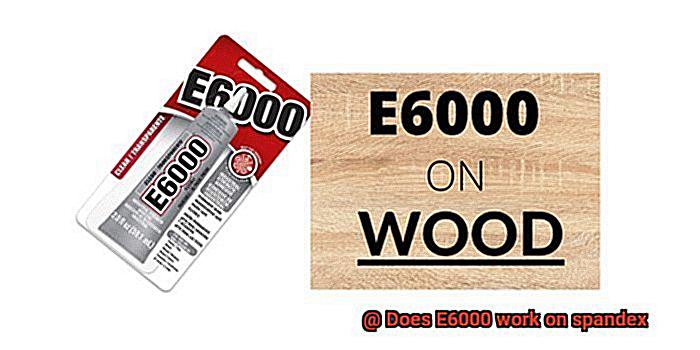
Advantages of Using E6000 on Spandex
This powerful glue offers a range of advantages that will leave you in awe.
First and foremost, E6000 creates a durable bond that can withstand stretching and movement without compromising the fabric’s integrity. Say goodbye to embarrassing wardrobe malfunctions and hello to confidence.
Unlike other adhesives, E6000 doesn’t harden or become brittle when dry. Your spandex garments will retain their stretchiness and shape, even after gluing. No more worries about your favorite leggings losing their elasticity – E6000 has got you covered.
In addition to its flexibility, E6000 boasts excellent adhesion properties. It forms a strong, long-lasting bond with spandex, ensuring your garments can handle whatever life throws at them – whether you’re hitting the gym or dancing the night away.
Concerned about washing your spandex items? Fear not. Once E6000 has fully cured, it becomes waterproof and can withstand regular washing without deteriorating. Keep your spandex clean and fresh without compromising the bond.
Not only does E6000 offer exceptional performance, but it also dries clear. No visible residue or marks on your spandex fabric – just a seamless and invisible bond that keeps your garments looking flawless.
Worried about drying time? Don’t be. E6000 sets within 24 hours, allowing you to enjoy a strong bond without waiting too long.
E6000 is also incredibly versatile. It works on various types of spandex fabrics, including nylon spandex, polyester spandex, and Lycra. You can also use it to bond spandex to materials like leather, plastic, or metal – the possibilities are endless.
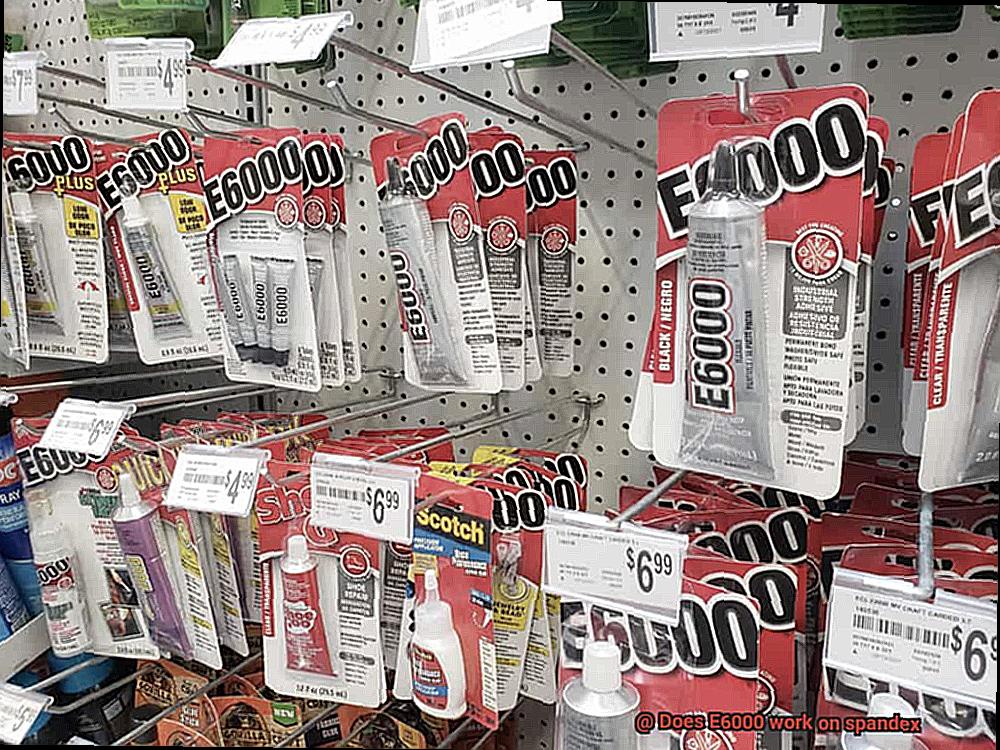
Lastly, E6000 is widely available and affordable. Purchase it online or at local craft stores whenever you need it.
Preparation Before Applying E6000 to Spandex
Today, we embark on a mission to conquer the spandex universe with the mighty E6000 adhesive. Whether you’re a DIY enthusiast or a professional costume designer, knowing how to prepare spandex for E6000 application is crucial for achieving a strong, long-lasting bond. Get ready to unleash the power of bonding.
Step 1: Cleanse the Fabric:
Like any superhero duo, preparation is key. Begin by washing your spandex with a mild detergent and warm water. Ensure every nook and cranny is free from dirt, oils, and residue that could interfere with the adhesive’s grip. Handle the fabric gently to avoid stretching or damaging it.
Step 2: Dry Thoroughly:
Moisture can be the kryptonite that weakens the bond between E6000 and spandex. To counter this, allow your beloved spandex to air dry completely. If you’re in a hurry, you can use a low heat setting. Remember, patience is a virtue.
Step 3: Trim Loose Threads and Edges:
To ensure our bond is as strong as possible, eliminate any weak points by trimming loose threads or frayed edges with sharp scissors. This step will prevent the glue from lifting or separating over time.
Step 4: Create Texture for Better Adhesion:
Sometimes, even superheroes need a little extra grip. Use fine-grit sandpaper or an emery board to gently roughen the surface of the spandex in a circular motion. This creates a textured surface that allows E6000 to adhere better, giving your bond super strength.
Step 5: Test Before You Bond:
Before embarking on your gluing adventure, it’s wise to test a small inconspicuous area of the spandex. Apply a small amount of E6000 and allow it to dry completely. Check for any discoloration, damage, or changes in texture that might occur. If everything looks good, proceed with confidence.
Step 6: Safety First:
As superheroes, we prioritize safety. Ensure you work in a well-ventilated area to avoid inhaling E6000’s strong odor and fumes. Don’t forget to wear gloves to protect your hands and prevent any transfer of oils or residues onto the spandex.
Application Tips for Using E6000 on Spandex
Look no further than the remarkable E6000. This extraordinary adhesive is renowned for its strength and versatility, making it a top choice for countless crafting and DIY projects. In this enlightening article, we will delve into some invaluable application tips for using E6000 on spandex, ensuring an unyielding and long-lasting bond.
Prep the Surface:
Before embarking on your E6000 journey with spandex, meticulous surface preparation is paramount. Commence by meticulously cleansing the fabric with a mild soap and water solution to expunge any lurking dirt or oils that may hinder the adhesive’s bonding prowess. Ensure the fabric is impeccably dry before proceeding.
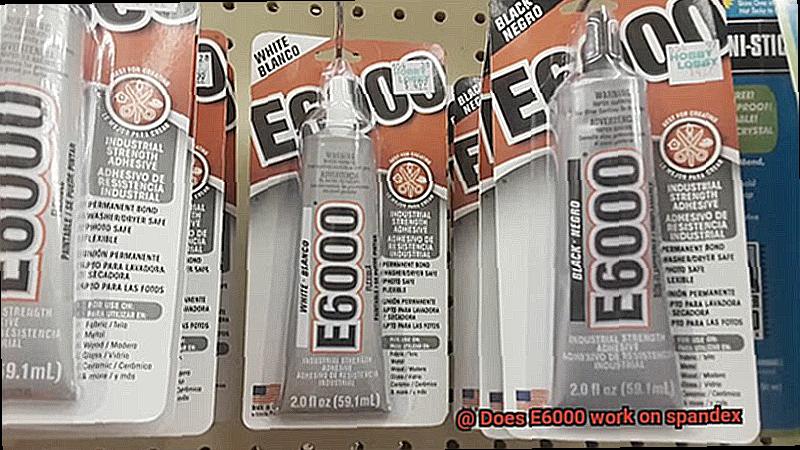
Create Texture:
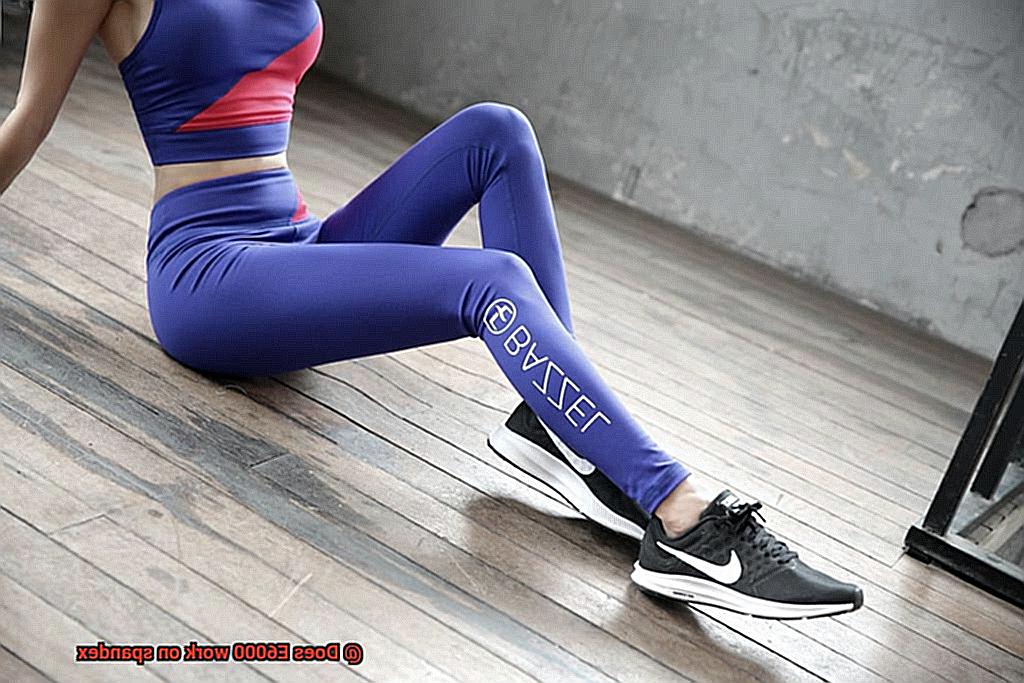
To augment the adhesion of E6000 on spandex, gently introduce texture to the surface. Employ a fine-grit sandpaper or an emery board to delicately scuff the area where the adhesive will be applied, employing circular motions. Exercise caution not to exert excessive pressure that could potentially mar the spandex in the process.
Less is More:
Bear in mind that when it comes to applying E6000 on spandex, a conservative approach reigns supreme. Squeeze a minuscule bead of adhesive onto a disposable surface such as cardboard or wax paper. Then, adroitly employ a toothpick or petite brush to evenly distribute the adhesive across the spandex, ensuring a thin and uniform layer.
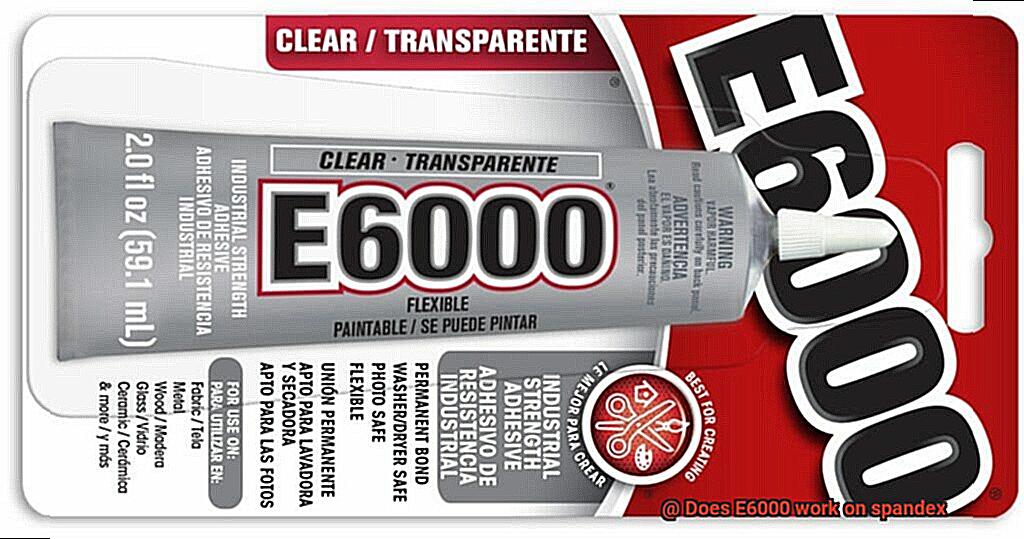
Allow Ample Curing Time:
Patience emerges as an indomitable ally when working with E6000 on spandex. Grant the adhesive ample time to cure fully before handling or donning the garment. Typically, E6000 demands approximately 24 to 72 hours for comprehensive curing, contingent upon temperature and humidity levels. During this waiting period, preserve the spandex flat and undisturbed to foster optimal bonding.
Reinforce with Vigor:
In select instances, an extra layer of fortification may be requisite to cement the bond between E6000 and spandex. Employ a weighty object like a book or weight to apply pressure atop the bonded area. Leave it undisturbed for several hours or even overnight, adhering ardently to the manufacturer’s guidelines.
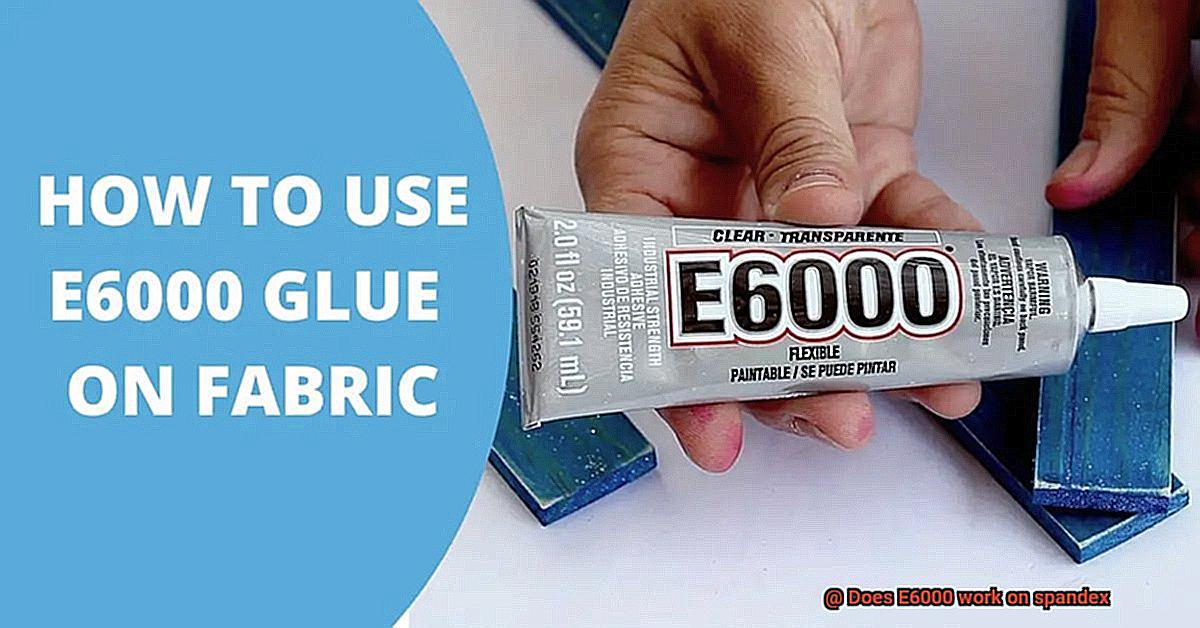
Curing Time for E6000 on Spandex
Curing time is a critical factor to consider when using E6000 adhesive on spandex fabric. The curing process is when the adhesive transforms from a sticky mess into a robust bond that will hold your project together. So, let’s dive into the details and discover the optimal curing time for E6000 adhesive on spandex.
There are several factors that can affect the curing time:
- Temperature: The ideal temperature for curing E6000 on spandex is around 70°F (21°C). Cooler temperatures can slow down the process, while warmer temperatures can speed it up.
- Humidity: High humidity levels can prolong the curing time, so it’s best to work in a well-ventilated area with moderate humidity.
- Adhesive Thickness: Thicker layers of adhesive will take longer to cure. To speed up drying, apply a thin, even layer.
Now, let’s talk numbers. Generally, E6000 adhesive needs at least 24 to 72 hours to fully cure. That’s right, patience is key. Avoid pulling or stretching the spandex too soon to prevent compromising the bond. Give it time to reach its maximum strength.
To ensure a rock-solid bond, consider clamping or securing the materials together during the curing process. This will maintain constant contact between the adhesive and fabric, guaranteeing the best results.
It’s also worth noting that different types of spandex may have coatings or finishes that can affect bonding. To avoid any surprises, always test a small area before committing to a larger project.

Reinforcing the Bond with Additional Stitching or Fabric-Specific Adhesive
In the realm of bonding materials like spandex and E6000, ensuring a strong connection is vital for durability and longevity. This article delves into the benefits of incorporating additional stitching and fabric-specific adhesive to fortify the bond between spandex and E6000, providing a reliable and long-lasting solution.
Additional Stitching for Strength and Security:
- By adding stitching to the adhesive bond, the strength and resilience are enhanced, reducing the risk of breakage over time./li>
- Selecting the right type of thread and needle for spandex fabric is crucial to maintain the integrity of the stitching, especially when subjected to stretching./li>
- Depending on the project’s size and complexity, hand stitching or using a sewing machine can be suitable methods to achieve desired results.
Fabric-Specific Adhesive for Added Security:
- Fabric-specific adhesives are specially formulated to adhere to various fabric types, including spandex.
- These adhesives create an extra layer of security, guaranteeing a robust bond even under stress or frequent use.
- It is imperative to choose an adhesive compatible with spandex, conducting a patch test beforehand to avoid potential damage or discoloration.
Target High-Stress Areas for Reinforcement:
- Prioritize reinforcing high-stress areas such as seams, hems, or regions prone to stretching or movement.
- By reinforcing these areas, the lifespan of spandex garments or accessories is prolonged, preventing damage or wear.
Consult Manufacturer’s Instructions and Seek Professional Advice:
- Not all spandex projects may benefit from additional stitching or fabric-specific adhesives.
- To ensure success with complex repairs or modifications, always refer to the manufacturer’s instructions or seek professional guidance.
SBoLZJBGM5o” >
Conclusion
In conclusion, E6000 is an excellent adhesive option for spandex.
Its strong bond and flexibility make it ideal for repairing or embellishing spandex garments. Whether you’re fixing a tear or adding some bling to your favorite spandex outfit, E6000 will get the job done.
Say goodbye to worries about your spandex coming undone – with E6000, you can trust that your garments will stay intact and looking fabulous.


